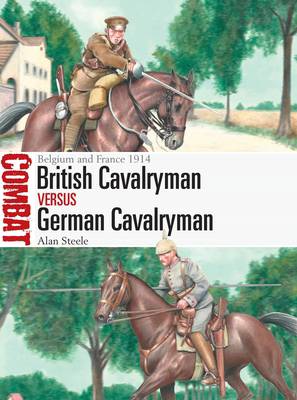
- Retrait gratuit dans votre magasin Club
- 7.000.000 titres dans notre catalogue
- Payer en toute sécurité
- Toujours un magasin près de chez vous
- Retrait gratuit dans votre magasin Club
- 7.000.0000 titres dans notre catalogue
- Payer en toute sécurité
- Toujours un magasin près de chez vous
Description
Fully illustrated, this study casts light on the utility and role of the German and British cavalry in the early stages of World War I on the Western Front.
In the early months of World War I, before the fighting degenerated into static trench warfare, there was a brief period of mobile warfare, as the German Army advanced through Belgium and northern France, forcing the French and British forces facing them to retreat. The British cavalry had the difficult task of covering the withdrawal of the British Expeditionary Force and the German cavalry, the equally demanding task, after weeks of combat and forced marches, of maintaining contact with a rapidly retiring enemy. In this study a comparative assessment is made of each side's doctrine, organization, equipment, and training, followed by a detailed analysis of their actual performance in three key encounter actions: Casteau/Soignies (August 22), Cérizy/Moy (August 28), and Le Montcel/Frétoy (September 7). Finally, a brief conclusion highlights that both sides made very successful use of cavalry in other theaters of operations and, indeed, during the final phase of the war on the Western Front, when British and Commonwealth cavalry were once again able to demonstrate the soundness of their doctrine and training in the mobile warfare that preceded the final German collapse in 1918.Spécifications
Parties prenantes
- Auteur(s) :
- Editeur:
Contenu
- Nombre de pages :
- 80
- Langue:
- Anglais
- Collection :
Caractéristiques
- EAN:
- 9781472848826
- Date de parution :
- 16-08-22
- Format:
- Livre broché
- Format numérique:
- Trade paperback (VS)
- Dimensions :
- 186 mm x 247 mm
- Poids :
- 254 g

Les avis
Nous publions uniquement les avis qui respectent les conditions requises. Consultez nos conditions pour les avis.






